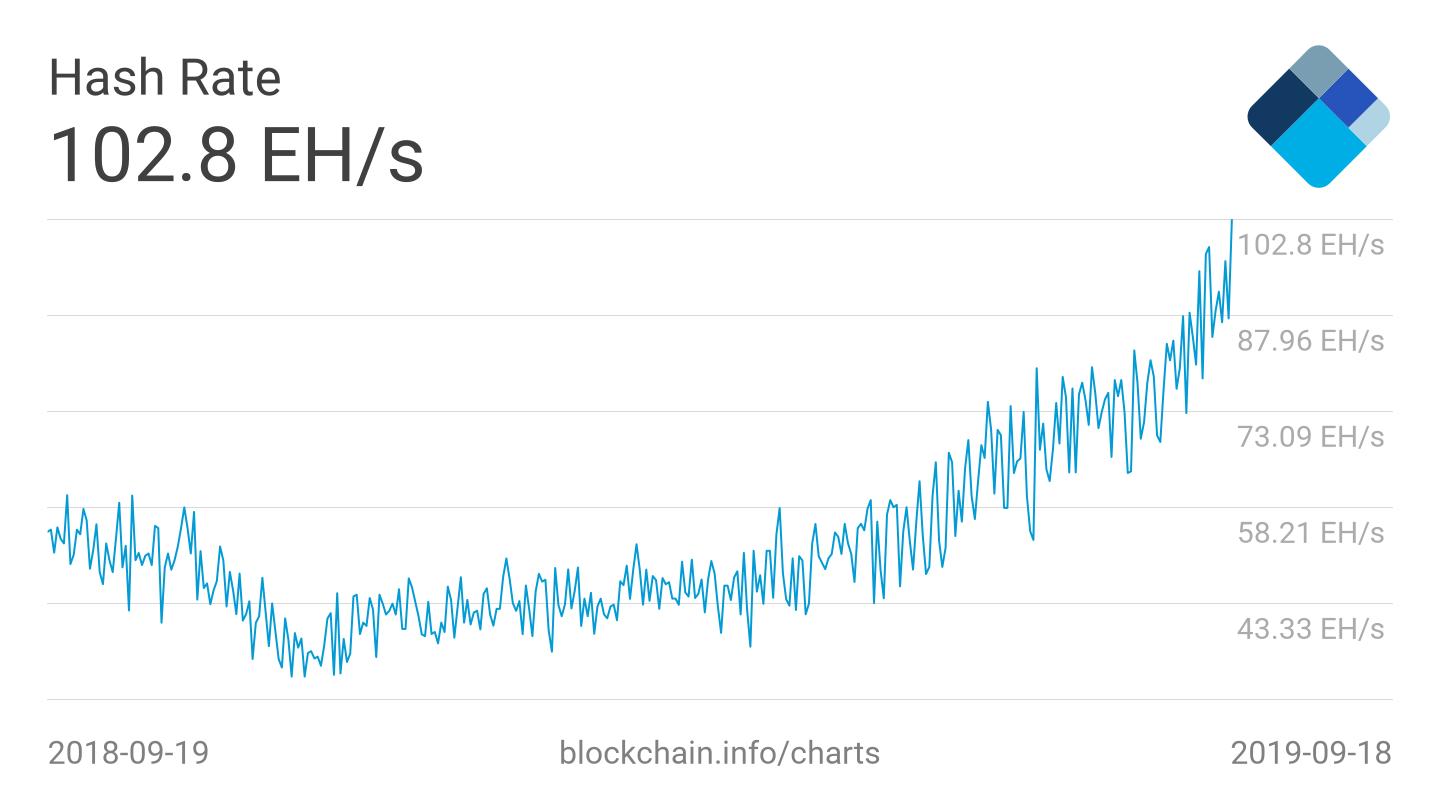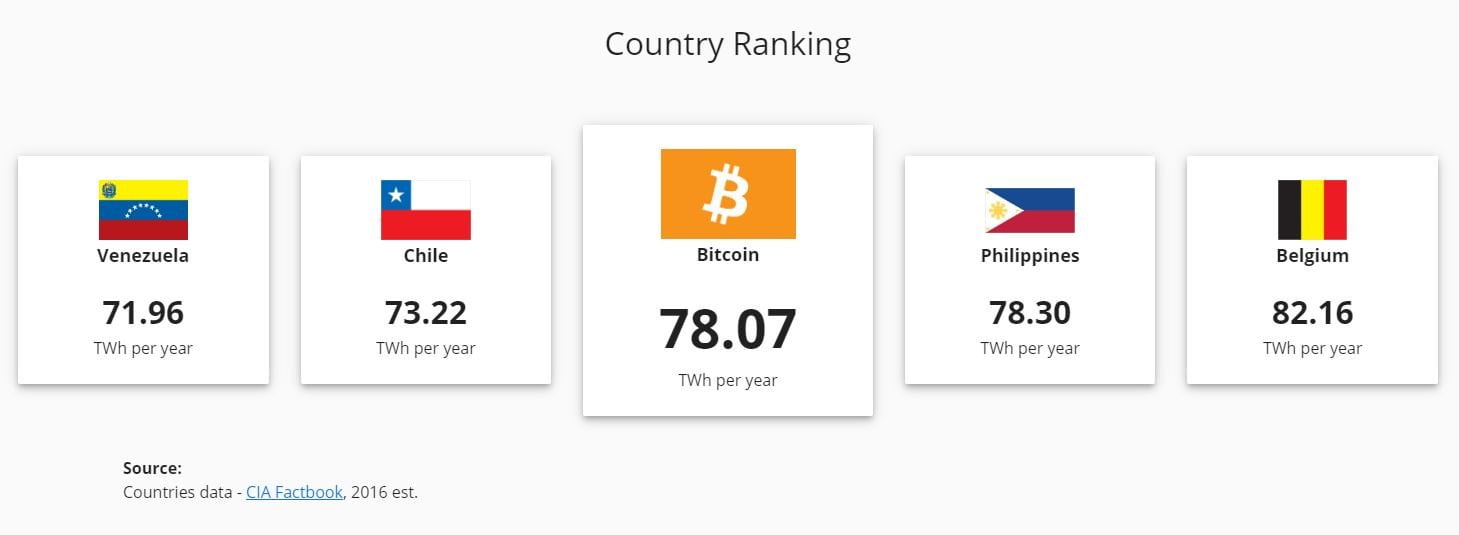Bitcoin Mining Now An Even Bigger Industry
Despite the recent lull in the price of the Bitcoin price, miners still seem to be putting their pedal to the metal.
As reported by Blockchain.com on Thursday, the hash rate of the leading cryptocurrency network has topped the 100 exahashes/second milestone for the first time… ever. In fact, the data website revealed that Bitcoin’s hash rate hit 102.8 exahashes/second, which is up by over 150% from the bottom seen in December.
For those that have no clue what the heck an “exahash” is, the number of hashes being processed by Bitcoin miners each and every second to maintain the network is the following: 102,800,000,000,000,000,000.

Yes, each and every second of the day (barring that the hash rate changes), computers running this network across the world crank out that number of hashes as a way to secure and process transactions. For some perspective, each human would have to do 13706666666.7 SHA-256 hashes each and every second to maintain Bitcoin at current security levels.
With all this network growth in mind, you might be wondering — how much energy is the Bitcoin network using?
According to the Cambridge Bitcoin Electricity Consumption Index, a project started by the University of Cambridge’s Centre for Alternative Finance at Judge Business School, about 78.07 terawatt-hours per year. This is about equivalent to 0.31% of the world’s total electricity production, and 0.36% of the world’s total electricity consumption.
To give this number some context, Bitcoin, with current network security levels, will consume more electricity than Venezuela, Chile, Switzerland, Israel, and other recognized but smaller countries. Should growth of Bitcoin’s hash rate (and thus energy needs) continue, the network’s energy consumption will soon overtake that of the Philippines, Belgium, and Finland.
Not That Bad
This seemingly harrowing statistic may feed into the argument that Bitcoin is a clear detriment to the environment and society.
Speaking to Fortune, Pat Gelsinger, the CEO of VMWare, said that Bitcoin is contributing to the ongoing “climate crisis” that many scientists and politicians actively discuss:
“It takes the energy of a home, half-a-home a day, to do a single entry into a Bitcoin ledger.”
However, this fear may be somewhat unfounded. In a 19-page report released late last year, the crypto investment and research firm, claimed that renewable energy makes 77.6% of total Bitcoin mining, citing the concentration of renewable energies in areas where Bitcoin miners are, namely China, Iceland, the west coast of the U.S., and the west coast of Canada. They followed this estimate up this year by claiming that some 75% of Bitcoin mining is renewable.
Other sources have verified these claims. In a post for HackerNoon, Robert Sharratt, a former employee of the Natural Resources & Power Group, wrote that Bitcoin is primarily powered by Chinese hydro electricity:
“I recently spoke several times and at length to former power industry colleagues in Hong Kong. Their estimate is that more than 80% of all Chinese miners are located in Sichuan province. The vast majority of power produced in Sichuan is from hydro power.”
Photo by Createria on Unsplash


